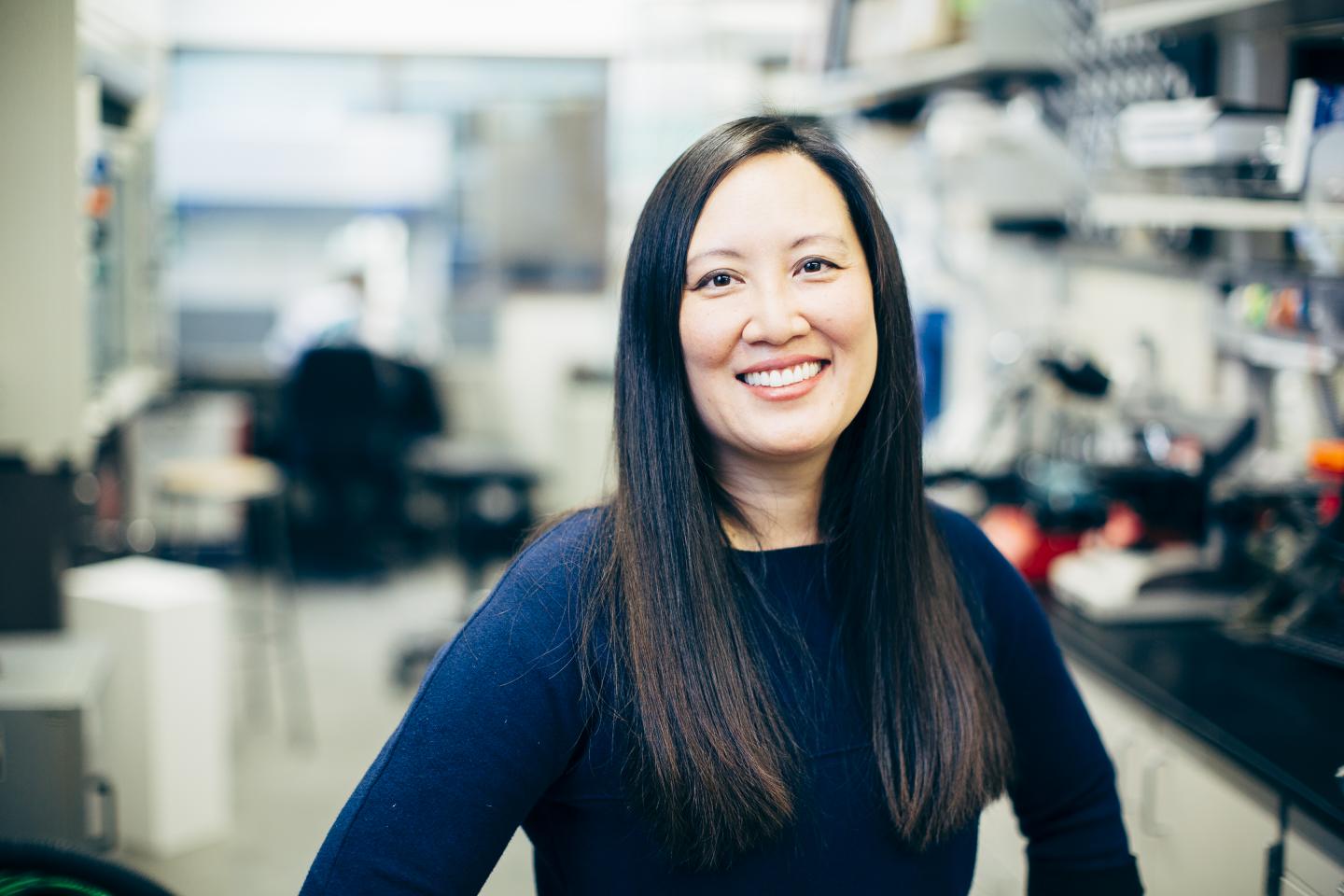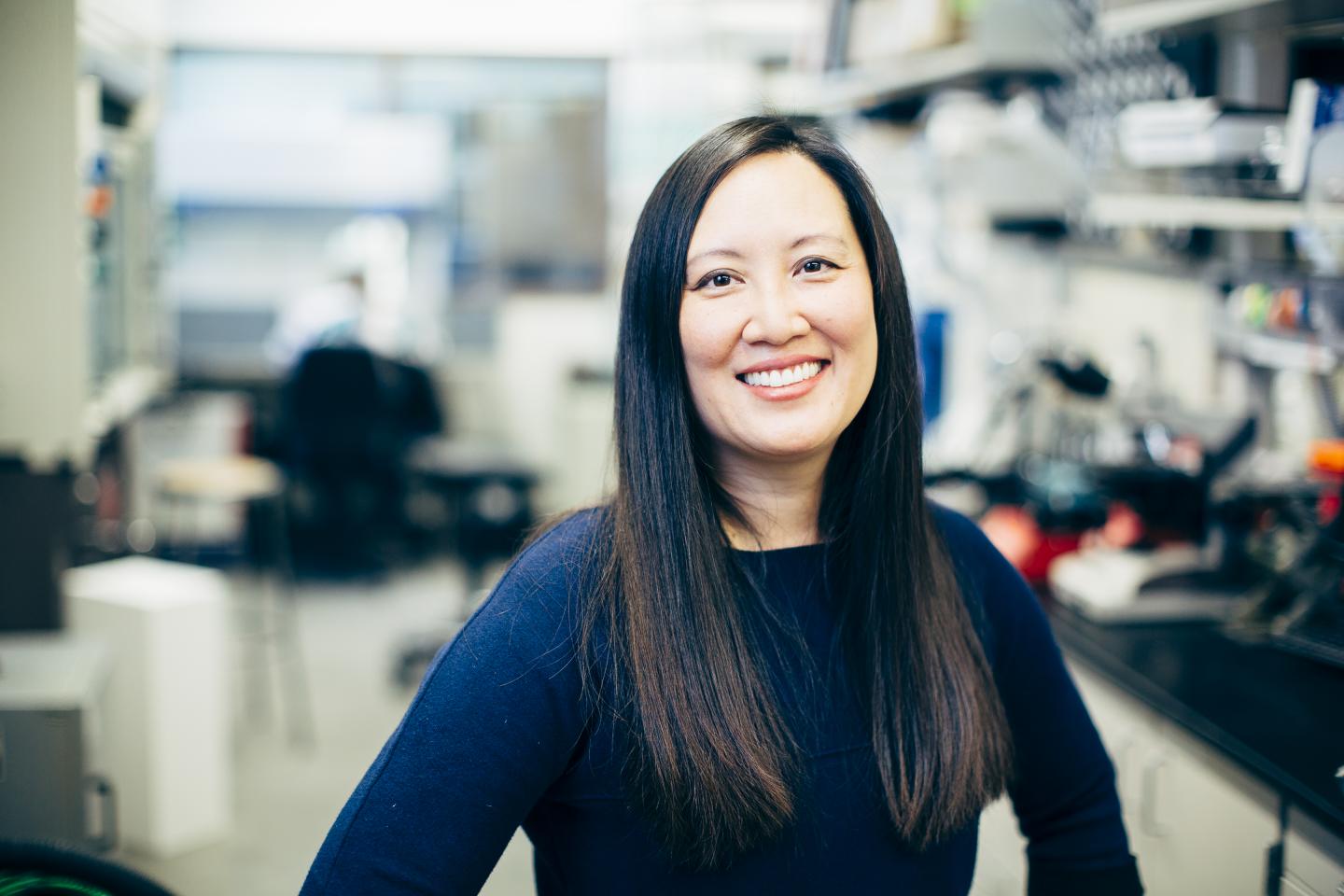
Credit: MSU photo by Adrian Sanchez-Gonzalez
BOZEMAN – Just as an entomologist studies how ants organize themselves in a colony, Montana State University researcher Connie B. Chang is studying how microbes function in their own communities, called biofilms — research that could shed new light on how microbes causes disease or generate biofuel.
Chang, an assistant professor in the Department of Chemical and Biological Engineering in MSU's Norm Asbjornson College of Engineering, has won the National Science Foundation's Faculty Early Career Development (CAREER) award to advance her research. The five-year, $500,000 grant is the agency's highest honor in support of early-career faculty.
"This award recognizes Dr. Chang for her outstanding work over the past few years, and it acknowledges her incredible potential going forward," said Jeff Heys, head of the chemical and biological engineering department.
"It will be exciting to see where this goes, as we bring new approaches for studying the complex behaviors in microbial communities that people still don't fully understand," said Chang, who received the award in May.
Biofilms form when bacteria and other microbes assemble to create slimy, protective mats. They are nearly ubiquitous in nature, involved in everything from wound infection to dental plaque to the taste of beer. Scientists in MSU's Center for Biofilm Engineering have studied the behavior of certain biofilms to help create products such as antiseptics, but Chang said relatively little is known about how the spatial arrangement of microbes fundamentally determines biofilm behavior.
"The idea is to pioneer a new field of biofilm research where we can actually engineer biofilms from the microbes themselves," Chang said.
The research will draw heavily from Chang's work with microfluidics, the technology of manipulating tiny droplets of water and oil using networks of tubes etched in plates of glass. These palm-sized, glass "chips" can handle millions of droplets per minute.
In 2016, Chang won $1.3 million from the U.S. Department of Defense to explore microfluidics as a technique for cultivating millions of strains of viruses, such as influenza, in a highly controlled environment and then isolating strains that counteract the harmful virus.
Now, instead of viruses, Chang will grow bacteria and other microbes in the tiny drops. Then, using precise methods of assembling the drops in three dimensions, her team will construct biofilms in a way similar to how they would occur naturally — but with intentional variations. The team will use powerful microscopes to observe how the variations alter the characteristics of the biofilm.
"This project will allow us to study interactions between single cells in biofilms in order to understand their population-level behavior," Chang said.
According to Chang, the results could lead to new ways of treating harmful biofilms — and creating beneficial ones. Understanding exactly how antibiotic-resistant biofilms are organized could help researchers pinpoint ways to disrupt the biofilm's microbial community. Alternately, researchers could begin to engineer biofilms that would be more efficient at generating biofuel or treating wastewater.
"Few other topics have such far-reaching implications," said Matthew Fields, director of the Center for Biofilm Engineering, adding that the research will significantly advance the center's research goal: to understand the assembly, evolution, stability and function of microbial biofilms.
###
Chang's CAREER grant will also fund a space in the new Norm Asbjornson Hall called the Soft Materials Shop, which refers to the field of science that includes microfluidics as well as the study of gels and foams. The shop will include 3D printers and other tools and will be a space for MSU students from all disciplines and K-12 students to blend engineering and science with art and design, Chang said.
"Mostly I think it will be exciting to discover how microbes talk and communicate with one another," Chang said of her work going forward under the grant. "For example, how does microbial diversity impact these communities? Do the microbes cooperate or steal resources from each other? There's so much that's still unknown about biofilms."
At MSU, Chang leads a research lab that specializes in soft matter and microfluidics. Chang received her doctoral degree from the University of California, Los Angeles, and her bachelor's degree from Wellesley College. After a postdoctoral fellowship at Harvard University, she joined MSU in 2013.
Media Contact
Connie Chang
[email protected]
406-994-4592
@montanastate?lang=en
http://www.montana.edu
Original Source
http://www.montana.edu/news/17781/msu-researcher-wins-major-award-to-engineer-microbial-biofilms





